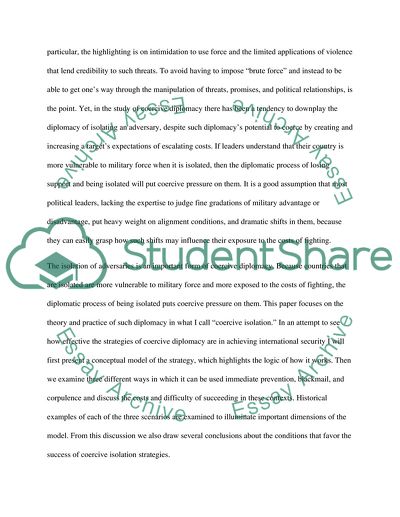Cite this document
(Strategies of Coercive Diplomacy in Pursuing International Security Research Paper, n.d.)
Strategies of Coercive Diplomacy in Pursuing International Security Research Paper. Retrieved from https://studentshare.org/politics/1808736-how-effective-are-strategies-of-coercive-diplomacy-in-pursuing-international-security-answer-with-reference-to-recent-examples
Strategies of Coercive Diplomacy in Pursuing International Security Research Paper. Retrieved from https://studentshare.org/politics/1808736-how-effective-are-strategies-of-coercive-diplomacy-in-pursuing-international-security-answer-with-reference-to-recent-examples
(Strategies of Coercive Diplomacy in Pursuing International Security Research Paper)
Strategies of Coercive Diplomacy in Pursuing International Security Research Paper. https://studentshare.org/politics/1808736-how-effective-are-strategies-of-coercive-diplomacy-in-pursuing-international-security-answer-with-reference-to-recent-examples.
Strategies of Coercive Diplomacy in Pursuing International Security Research Paper. https://studentshare.org/politics/1808736-how-effective-are-strategies-of-coercive-diplomacy-in-pursuing-international-security-answer-with-reference-to-recent-examples.
“Strategies of Coercive Diplomacy in Pursuing International Security Research Paper”, n.d. https://studentshare.org/politics/1808736-how-effective-are-strategies-of-coercive-diplomacy-in-pursuing-international-security-answer-with-reference-to-recent-examples.


